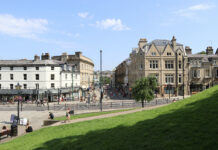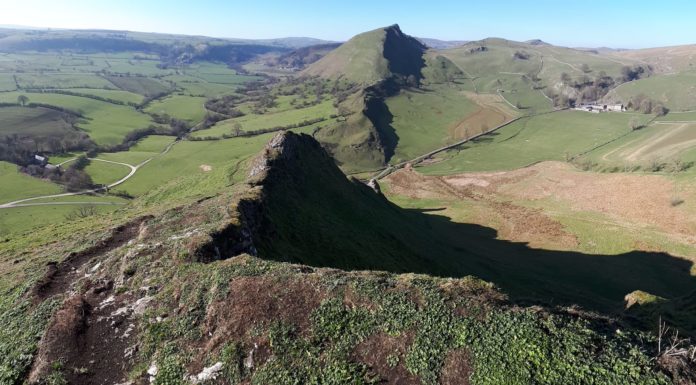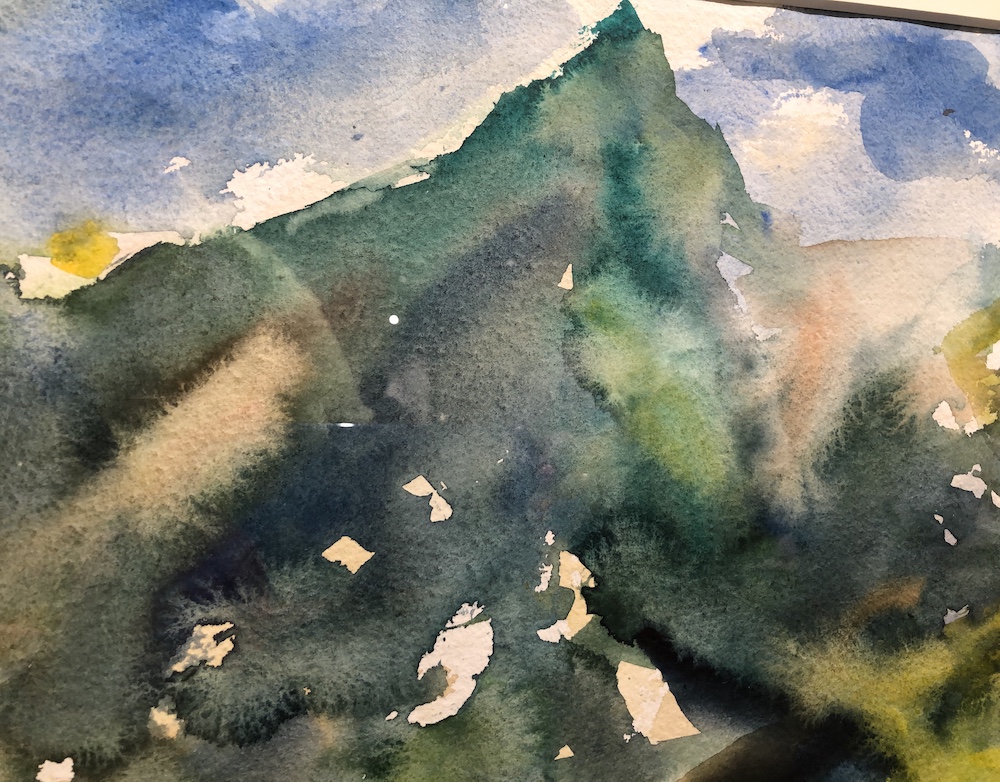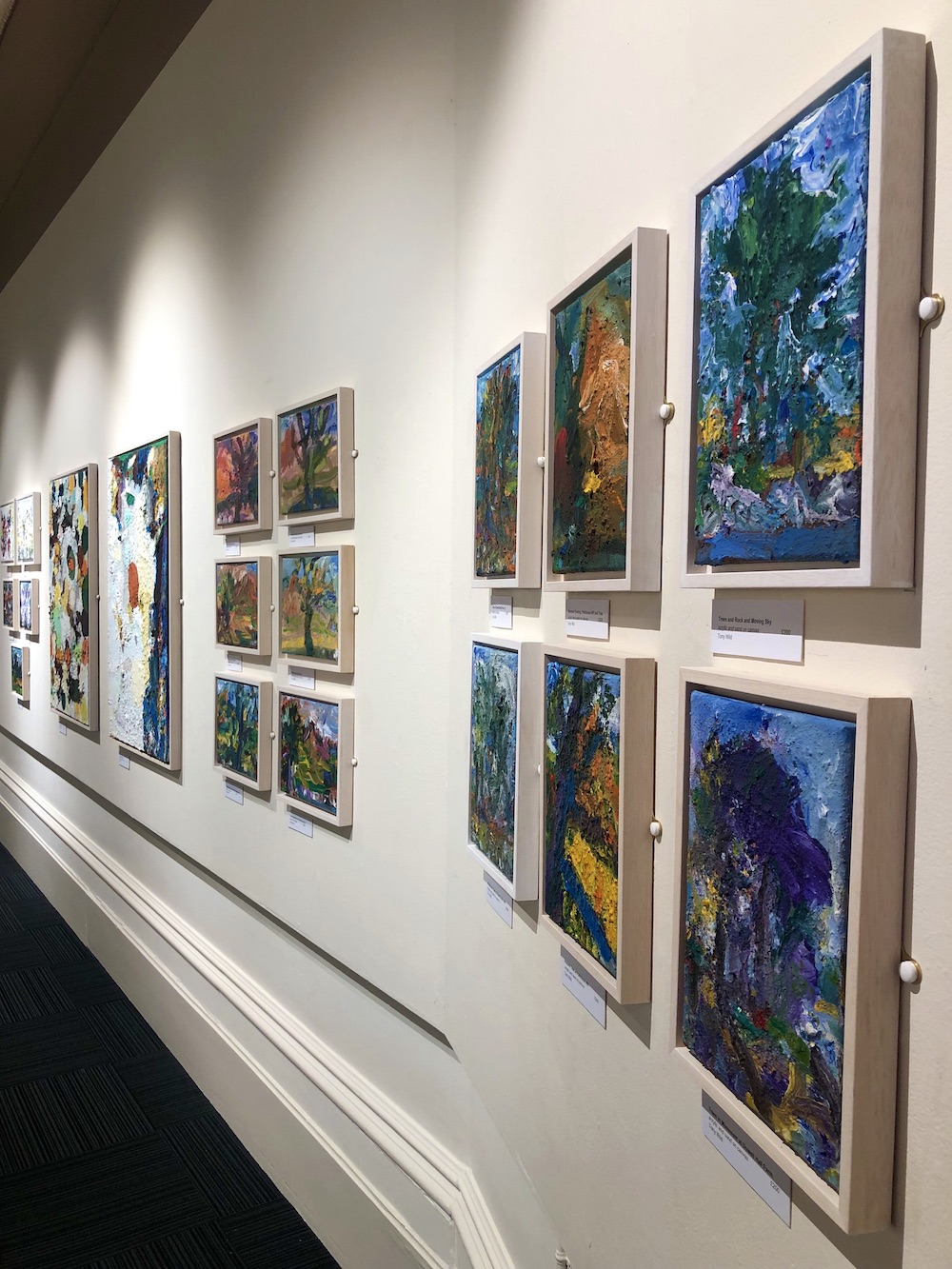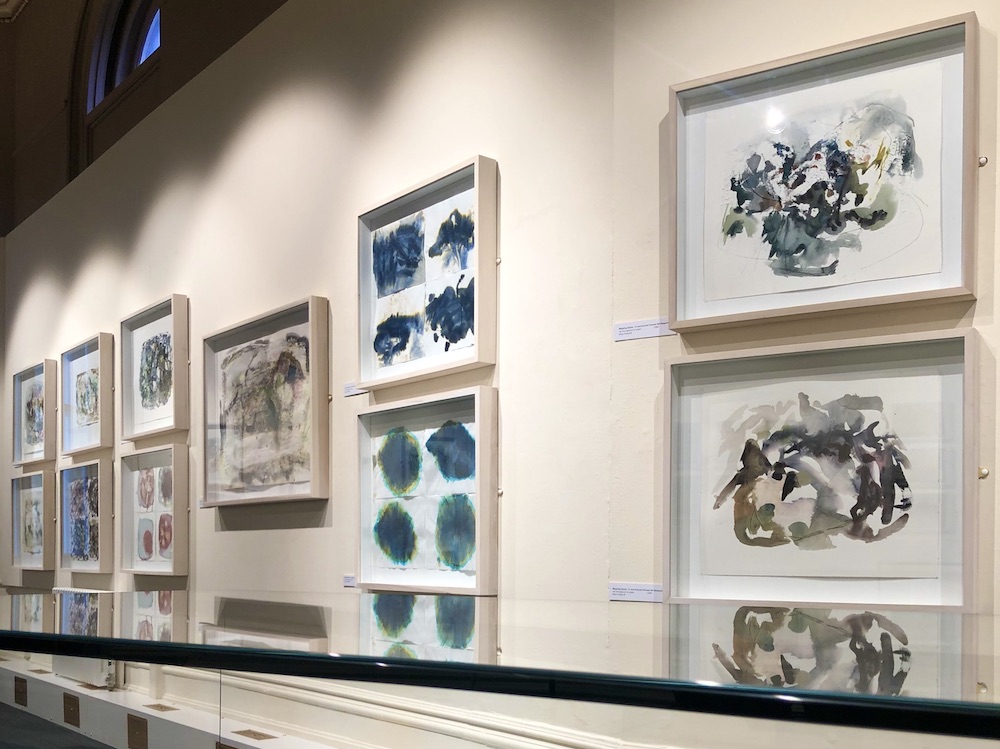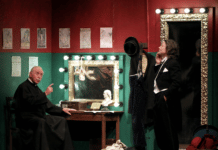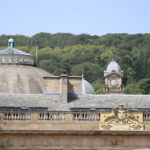Two artists, two interpretations, one unique place. The scale-like spine of Chrome Hill and Park House Hill, known as Dragons Back, singles out this areas uniqueness. It sits amongst the range of hills that form a natural amphitheatre where light and sound move in and through the escarpment.
This is where local artists Tony Wild and Brian Holdscroft would situate themselves for around twelve months and create the body of work on display at this colourful exhibition at Buxton Museum and Art Gallery.
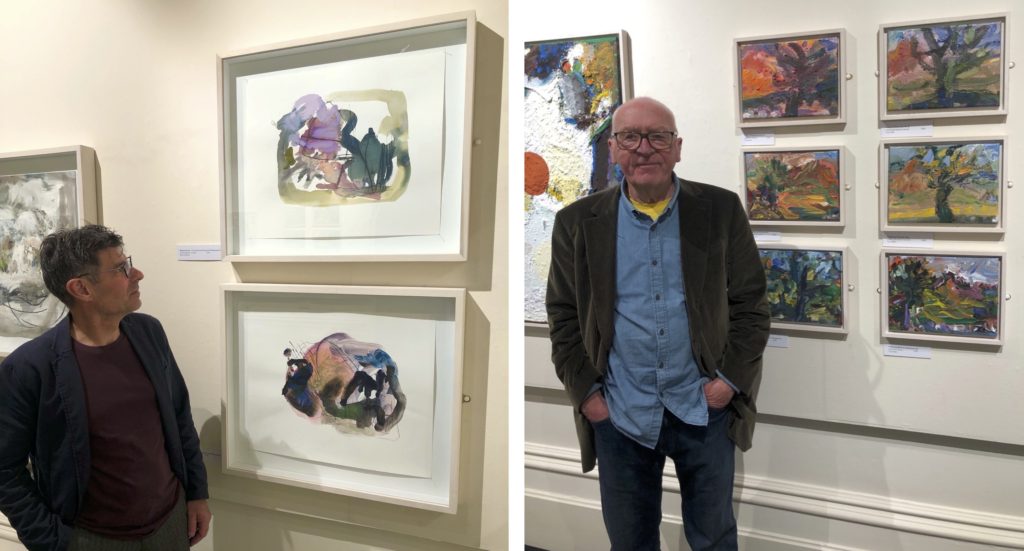
340 million years of history beneath our feet…
Chrome Hill is steeped in history – layers of it.
There are a series of sharp edged limestone ridges on the north side of the upper Dove Valley where, 340 million years ago coral reefs formed the edges of tropical lagoons.
Look east as you travel out of Buxton on the A53 towards Staffordshire. The leaning, sharpened peaks of Parkhouse and Chrome Hill are out of place amongst the softer landscape. And at only 425m you look down on them, a mini Switzerland sunken amongst rolling hills.
Typical of limestone landscapes these hills are riddled with a network of cave systems formed by swallets and resurgence waters which in later and colder times became places of hibernation, shelter and burial. There are notable caves; Dowel Cave was a burial place 6,000 years ago, the skulls and skeletons of ten people were found here but charcoal fragments reveal its use as far back as 11,000 years. Nearby Fox Hole cave on the pyramid shaped High Wheeldon had human bone, pottery, an axe and sharpened antler points that date the occupation of the cave at 15,000 years ago and excavations at Hitter Hill uncovered two cists and four rock cut graves. The finds are in Buxton Museum. Then there is the potholers’ favourite, the huge but hidden Owl Hole and the mysteriously deep and lesser known Etches cave, named after the family who farm the land.
The view from Hitter Hill is stunning and can easily be accessed from a footpath running behind The Quiet Woman pub at Earl Sterndale. It is this same view that features in Buxton Museum’s Wonder of the Peak gallery. From here the ridge of Parkhouse looms tall and imposing and the ‘spine’ of Chrome Hill clearly articulated giving rise to its local name ‘The Dragons Back’. Sharp sunlight adds vividity to this view when both crags cast their dense shadows into the valley accentuating the amphitheatre they create around Glutton and Dowel Dale.
Take a walk here and you will sense this area is indeed unique giving the impression that you are simultaneously in expansive space and yet closed in on all sides.
It is here in the valley of Dowel Dale that two artists, Tony Wild and Brian Holdcroft decided to plot their materials and their ideas to take their work on a journey for twelve months.
For twelve months they drew, explored, walked and photographed
Both artists originally hail from the Potteries. Tony having worked in the arts ever since studying at Burslem School of Art in the late 1950’s, and Brian developing his art form in more or less isolation from other artists until meeting Tony over twenty years ago. Over the years their work has diverged and returned to the landscape many times.
This exhibition is a culmination of work they created throughout the year from spring 2018 to spring 2019.

Most months are inclement here in the Peaks, they needed shelter. And so they hired a barn from farmer Mr Etches to store their materials, keep a stove and when needed take refuge.
Throughout the twelve months they drew, explored, walked and photographed. Their work shows the industry of their origins both in its output and how it now appears in series and variations.
Tony’s work falls into set of images. Chrome Hill and groups of trees appear as a repeated motif in small heavily textured and expressive paintings, their energy punching out from their size. Butterflies are lost in the textures of limestone and the microscopic world of lichens are honed in and magnified into much larger paintings. And there is colour, lots of it.
“Working outside meant I could concentrate on the landscape and to a large degree was dictated by the environmental changes such as light and weather. So the mood changes as the elements do. Working in the studio would only have been a concept of what we wanted to create”, explains Tony.
Brian’s work evolves into series; growth, erosion and mapping, as he considers the layered histories of the area and the interactions between its geology, materials, animal and human activity. He uses beeswax, pigment, ink and earth in his paintings. All were created outside at Chrome Hill.
“We’re not pulled towards the urban landscape as much – there’s less seasonal changes. Chrome and Parkhouse Hill has such a presence to it, it drew us like magnets”, says Brian.
Many would describe both artists’ work as abstract or expressive. Brian’s more so but the colours are naturalistic- and having experienced this area first hand- particular and precise. The work of both artist is lively and not always recognisable or descriptive, preferring to reveal its imagery and topography slowly as you immerse yourself into it, walk along with it, much as a landscape or a view unravels itself on a journey or by simply observing it quietly, in increments. In essence it’s all here.
All work is available to purchase – a 10% deposit is required to secure your purchase, collections are available once the exhibition has ended.
The Chrome Hill Project is open in Gallery 1 (first floor) until Saturday 23rd November 2019. Entry to the exhibition is free, donations are welcome.
Buxton Museum & Art Gallery, Terrace Road, Buxton, SK17 6DA
T: 01629. 533540
Opening times: Tuesday to Saturday 10am to 5pm (Sundays and bank holidays, from Easter to September 12 noon to 4pm)
Entry / Cost: Free, donations are welcome
Did You Enjoy This?
You might like our regular newsletter. We put all the best events, cultural highlights and offers from Buxton and the Peak District in your inbox every month.
This information will only be used to send you this newsletter. It is stored in Mailchimp.




